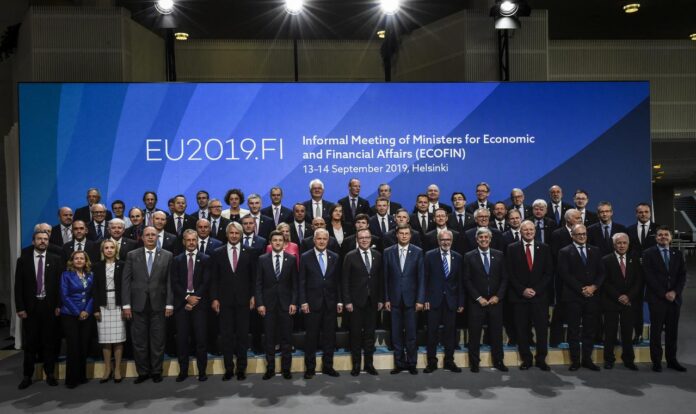HELSINKI: European Union finance ministers were holding the first discussion on Saturday about how to simplify the EU’s complex fiscal rules to help make public finances more sustainable and stabilise economies throughout business cycles.
Originally designed in 1997, the EU rules, called the Stability and Growth Pact, put limits on borrowing in the economic union of countries that share the euro currency, but left members sovereign over government debt and deficits.
After modifications in 2005, 2011 and 2013, the rules have become so complex that the European Commission, which is the guardian of EU laws, each year publishes an almost 100-page handbook to explain how they work, along with many exemptions and exceptions.
The two key elements of the rules are a limit on the nominal budget deficit of 3pc of GDP and a ceiling on public debt of 60pc.
“When we talk about simplification, it does not mean revising the key fiscal targets, just how they are measured and what parameters we use,” European Commission vice president Valdis Dombrovskis told reporters on entering the talks.
“We now heavily use directly unobservable parameters like the output gap, or structural balance, so the discussion is if we should use more directly observable parameters like nominal debt and expenditure increases,” he said.
Officials said, however, that changing the rules could take more than a year of discussions and legal process that would be driven by the new European Commission starting on Nov 1. Dombrovskis will retain his post in the new EU executive.
The ministerial discussion at the informal talks in Helsinki will be based on a report by the independent European Fiscal Board (EFB), requested by the Commission, which argues the elaborate rules should be boiled down to a medium-term cap on public debt.
Countries that have debt above 60pc would have to keep net government primary spending, which is expenditure less interest payments on public debt, at or below the rate of the economy’s potential GDP growth, which is the rate of growth that does not trigger higher inflation.
To avoid reliance on fluctuating annual data, the ceiling for net expenditure growth would be set for three years, after which it would be recalculated.
The ceiling could be abandoned based on a general escape clause triggered by the opinion of independent fiscal institutions and a more autonomous European Commission economic department.
MORE EFFECTIVE STABILISATION
The EFB argues that using the net primary expenditure rule would automatically stabilise economies. During downturns, when growth is below potential, spending would be higher than growth, while during good times, when actual growth exceeds potential, spending anchored at potential would be lower than growth.
The existing rules cap the headline budget deficit at 3pc of GDP and oblige governments every year to cut their structural deficit, the budget shortfall excluding one-off revenues and spending and the effects of the business cycle, until they reach balance or surplus.
For countries with debt above 60pc of GDP, the existing rules set a path for debt reduction that is 1/20 of the excess above 60pc every year, measured as an average over three years.
They also employ the expenditure benchmark that limits government spending at or below the rate of potential growth.
The EFB also proposed that instead of sanctions for not meeting EU fiscal rules – a measure that has so far never been applied to any country despite ample grounds – it would be better to use an incentive.
Countries that play by the new rules would as a reward get access to the euro zone’s about-to-be-created budget that would finance investment and perhaps later also perform a stabilising function during economic downturns.




